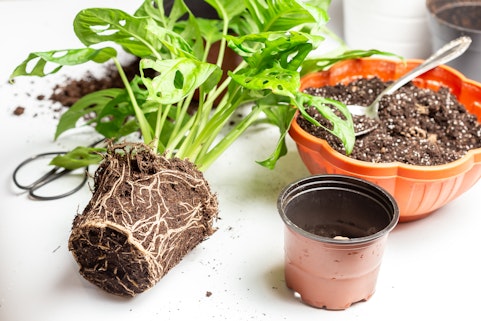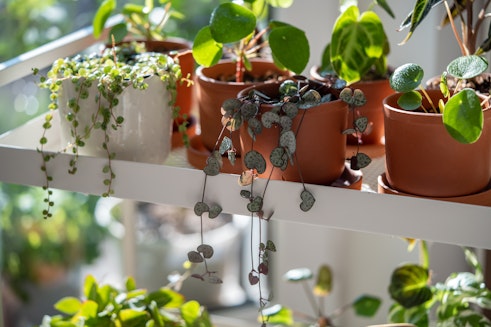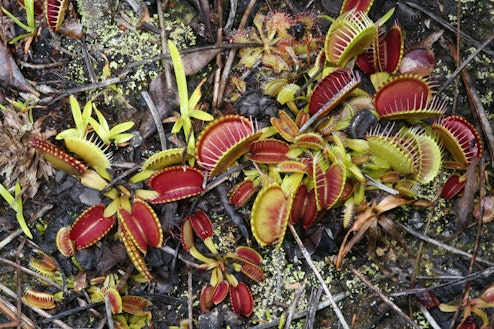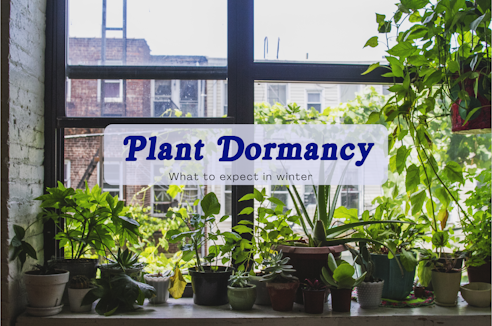
- Home
- What is potting mix?
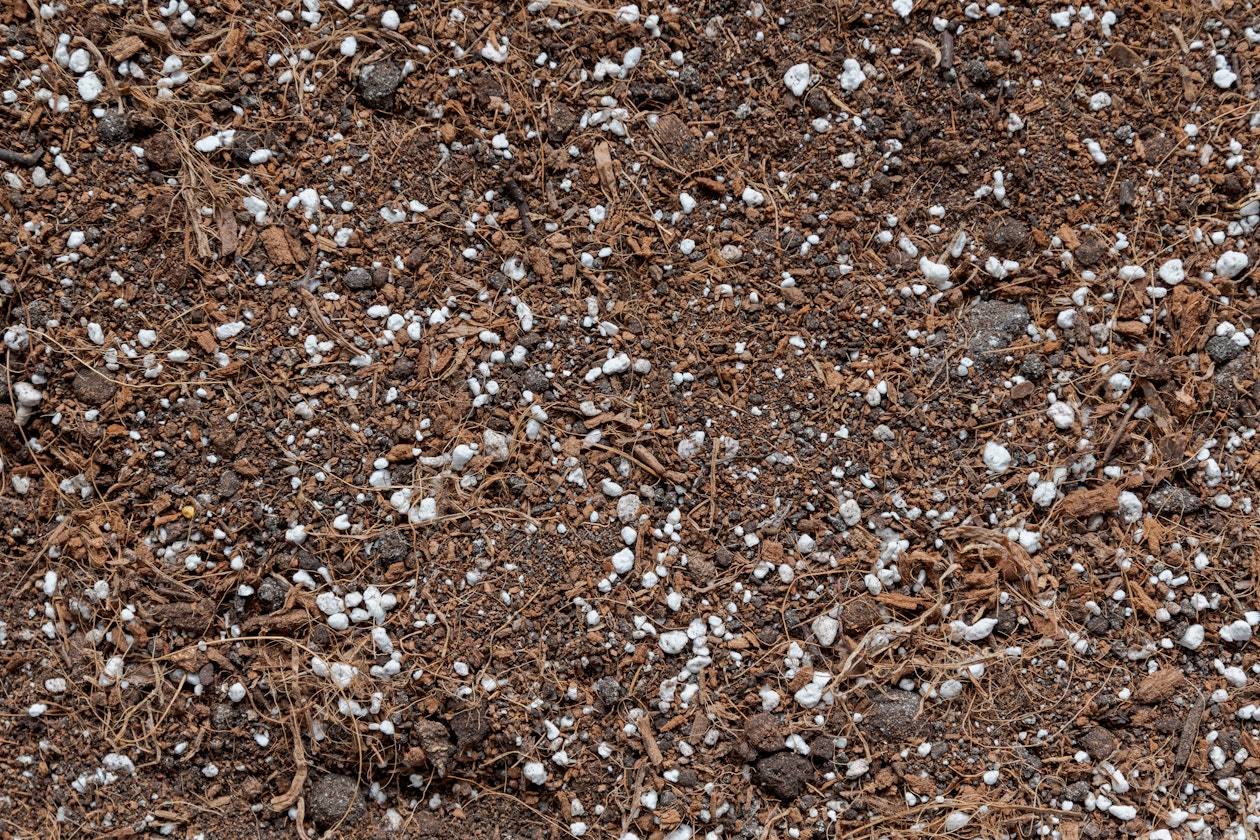
Like us, a plant is at its happiest when it's tucked into a comfy spot, with access to everything it needs. However, unlike us, the plant doesn’t get up and leave their comfy spot. Therefore, we can guarantee a plant's happiness and comfort by ensuring that its ‘comfy spot’ is as comfy as possible, and by that of course, I am referring to the potting mix it sits in!
It is of no surprise to anyone that most plants need potting into soil in order to be happy, and as much as I would love to give a simple equation, like: plant + soil + water = growth, it is never that simple. Watering requires assessment and judgement and is inconsistent at the best of times, and potting mix is no walk in the park either. But alas, you need not worry, for from this day forward, there will exist a simple and concise guide to potting mix and it is right here on this page for you to read, bookmark and send to your mam if you think it’d benefit her!
Why is potting mix important?
Look at a plant growing in the wild, and consider what medium surrounds its roots. The natural soil of the earth is a complex and highly varied ecosystem of thousands of elements that all produce the perfect environment for certain plants to live. The soil of the outdoors contains soils, debris, minerals, insects and invertebrates, small mammals, fungi, plant matter and a host of other materials. Further, the soil outside has layers of stratigraphy, extending for miles beneath our feet. When you consider the fact that plants have adapted to use this complex soil to their best advantage, binding them in a shallow pot with a single-element potting mix suddenly seems insufficient. In any case, the best way to ensure the most productive growth from a plant is to mimic its natural environment to the best of your ability, and a decent potting mix easily equates to over 50% of this. Further, a decent potting mix can help a plant grow big and healthy, and can even help to prevent problems like under and over watering.
A quick PSA about Drainage!
Just a quick aside, before we get into the real nitty-gritty (pun not intended), it is imperative that, for any plant, there is the ability for water to drain through and out the bottom of the potting medium. In the wild, water runs through metres and metres of topographical layers, being collected by roots as it drains through the soil. Stagnant water can host all sorts of microbes, fungi and moulds that eventually cause root rot. To prevent this, water that is put into your plants needs to have a way out. Certain inclusions within the soil can help the water drain through the soil quickly, but an exit point is required, usually by means of one or more small holes at the base of the plant-pot. Often people keep their plant in a plastic pot inside a ceramic or decorative pot, or pot their plant with a layer of drainage medium at the bottom like coarse gravel or clay pebbles.
Can I use outdoor soil or compost for my houseplants?
This is a very common question, but when you’re using soil from outside you’re bringing all the extras that go with it, we’re talking about bugs that might eat your plant, potential soil-borne diseases and even soil pathogens that could be harmful to you. Aside from this, outdoor soils tend to be a lot more dense in structure and often contain peat, clay or silt, which can become hard or hydrophobic when they dry out.
What makes good soil?
There are conditions that make some soils ideal for certain plants and others not, and as always in these posts, it really helps to know your plant and what it needs. But generally speaking, the majority of plants can be divided into 4 main groups:
Terrestrial - chunky mix that retains water - for typical earth growing plants (Monstera, Maranta, Calathea, Begonia, Anthurium, Spathipyllum, some Hoya, some Philodendron).
Succulent - a stoney mix that allows for lots of drainage and quick drying - For plants with thick, succulent leaves or stems (Cacti, Aloe, Sedum, Crassula, Aeonium, some Euphorbia, Echeveria, Kalanchoe, Agave).
Epiphytic - a chunky mix with lots of aeration so that roots have regular access to oxygen and nutrients. For plants that naturally grow upon other plants or woody surfaces (Most Orchids: Phalaenopsis, Dendrobium, Cattleya, Brassia, Oncidium; Most Bromeliads, some Hoya, some ferns).
Marsh plants - a thick, low nutrient mix that retains excessive amounts of water for constant hydration and humidity (Carnivorous Plants: Dionaea, Nepenthes, Sarracenia, Pinguicula).
It is important to note that these are loose categories. Resultantly, there are plants that do not particularly align to any one, such as semi-aquatic and aquatic plants. The best way to find the ideal mix for any specific plant is to find the specific environment it favours, and copy it to the best of your ability! For example, Sansevieria (now Dracaena) are technically succulent plants but certainly require more water retaining substrate than say a cactus or a stonecrop would need. Further, the environment that your plants are in may affect what kind of soil you need too: hotter, brighter places benefit from higher water retaining mixes and colder and darker spots need loose soil with better drainage.
Although it sounds like an arduous process, I have included a list below of common inclusions for soil which should hopefully make it easier. These are, in my opinion, the most accessible and useful materials to include. A quick google to find out what properties your plant prefers in its soil, plus this list, should help you put together the perfect mix every time!
Coco Coir
Coco Coir is typically used as a potting mix base. It is light, compact and retains water well, as well as being chemical-free and perfectly environmentally friendly and sustainable. It is a good medium to add other elements too to make a well draining mix, or to be mixed with absorbent media to make a mix that retains more moisture. This base suits most plants, terrestrial or otherwise, and is the best all-rounder.
Coco Chips
Coco Chips are a similar medium to coir, but are slightly more chunky. It is a good base for a mix that retains moisture, but the large chunks in it prevent it from fusing and clumping together! This medium allows the substrate to remain moist while keeping the mix loose and aerated. This base is better for plants that need temperate to tropical humidity, such as Hoya and Philodendron.
Porous Minerals
Minerals such as perlite and pumice help to break up the soil and stop it from clumping together, ensuring the root system consistent access to oxygen and nutrients, while allowing water to drain straight through with reduced retention. These inclusions are recommended for most plants and are a sure way of guaranteeing extra drainage to your mix, while helping insulate the potting mix too.
Vermiculite
Vermiculite is a light mineral that is the leading insulating inclusion in potting soil mixes. It is great for a bedding medium for germinating seeds, or as an insulating medium for saplings or young plants. Vermiculite expands and retains water and nutrients in the soil and allows the plant to access them when and if they are needed. This helps aid water regulation around the root systems and can prevent under and overwatering.
Sand
Sand can be used in multiple ways when potting. It is used frequently alongside grit and perlite in cactus mixes and in bog-mixes for marsh plants. It helps to aerate the soil and adds extra drainage. It is recommended to use coarse, construction or builder sand and not beach sand or play sand which is too fine.
Clay
Clay is often sold in the form of LECA (Lightweight Expanded Clay Aggregate) or hydrocorn pebbles, which are spherical clay pebbles. They help to keep the soil aerated and stop clumping, but they also naturally absorb excess water from the soil and release it slowly, assisting with water regulation. Many plants can be potted into LECA directly as their ability to store water and nutrients allows plant roots to tap into it as and when they need it. A layer of LECA pebbles at the base of a pot also makes an ideal drainage layer for potting directly into ceramics.
Bark (typically pine bark)
Bark is an ideal inclusion for terrestrial mixes, as it retains water and slowly releases it back into the soil, helping prevent overwatering and underwatering. Further, it helps to break the soil up and is an element in most ‘chunkier’ mixes. Bark also acts as a great medium for potting epiphytes, as the large chunks are rigid enough to hold the plant in place, while allowing lots and lots of oxygen to the roots, and retaining enough water for the plant to drink steadily.
Mosses
Several mosses are typically used in potting. Sphagnum moss, dried or live, absorbs lots of water and increases the humidity of the small atmosphere around a plant. It can be used in terrestrial mixes that require a little extra humidity, or in epiphyte mixes that require the same. Further, it can be used as a pot topper, as its natural antimicrobial and fungal properties can help prevent pests, fungi and moulds from living in the soil.
Fertiliser
Fertiliser is not an absolutely necessary element of potting mix, but adding a slow release fertiliser can help promote consistent healthy growth and reduce the amount of liquid fertiliser you have to apply in the future. Worm castings are a natural fertiliser that promote habitation of nitrogen fixing microbes in the soil, providing a healthy soil culture for plants and improving soil quality in the future. Alternatively, slow release fertiliser beads break down when in contact with water and add the nutrients directly into the soil over long periods of time. These methods are very useful for terrestrial mixes.
Gravel/Grit
Gravel, horticultural grit, or any similar stony inclusions are great for drainage, and can be used as a base in cactus and succulent mixes. These contain very little in the way of water retention, and allow water to pass straight through. This is great for adding drainage to an existing mix, or using as a base mix in itself, for plants that require quick drying between waterings.
A quick PSA about peat!
A lot of soils, specifically marketed for houseplants, contain a substance called peat. Peat is a type of organic soil that is formed by an accumulation of decaying plant matter and water, built up over a very long time. It is often found in marshes and bogs across the world and is very difficult to produce artificially. As a result, most sources of peat are natural sources, and are regularly exploited much faster than the rate of regrowth (1mm per year), which is only observed in 30-40% of peat bogs in the world. Peatlands are home to a plethora of unique animals and plants that rely on the unique ecological conditions of peat to survive. Unfortunately, the use of peat in horticulture is leading to a decline in peatlands across the world, and while restoration efforts are underway, the decline continues. Further, the harvesting of peat releases trapped methane and carbon dioxide into the atmosphere, contributing to global warming. Sustainable substrate options such as coco coir and coco chips are much better for the environment and, ironically, better for plants too! Coco substrate does not retain water as dramatically as peat, and when left to dry has a dusty, aerated texture, instead of clumping together into a dry brick, as is the case with peat. Further, coco substrate or mineral substrate reduces the risk of unwanted pests, mould and fungi! So remember… Eat, sleep, no peat!
What is Root Houseplants’ soil mix like?
We have endeavoured to create a perfect mix that is beneficial to a wide array of different types of plant. The Root Houseplants potting mix is based on a coco coir substrate, which is light and fresh, allowing for great aeration and appropriate drainage. The inclusion of pine bark and perlite allow for a chunkier mix that does not fuse together, while helping with water retention and drainage, helping plant keepers with water regulation, which makes things a little safer and easier for you! Finally, the inclusion of worm castings provide odour-free fertilisation, that releases itself slowly into the soil between waterings, and creates a healthy and nitrogen rich substrate for a number of months after potting! We have tailored our mix with trial and error, and it is appropriate for most plants! We don’t recommend it for cacti and succulents, nor chunky-root epiphytes like most Orchids. It can be mixed with other inclusions to tailor the mix to your plant’s specific needs, or just used as it comes! Cute Root worm sticker included!
Jonathan Davies
Jonny has worked at Root since May 2023. His love for plants was inherited initially from his grandparents and parents, but really took off once he moved into his own place, where he started picking up small plants and was fascinated by watching how they grow and change over time. Jonny has a degree in Archaeology and Classics from the University of Sheffield, and a masters in Egyptology from Swansea University, where he primarily focused on garden culture in the ancient world, which he has managed to extend to a PhD thesis in the University of Liverpool, where he has been able to combine his love for plants with his love for ancient language and culture. Jonny loves being in the natural spaces around North Wales and Cheshire where he used to go growing up, and often spends hours examining the plants and trees, and kicking up the leaf litter searching for mushrooms and insects. He is fascinated most by plant biology, taxonomy and learning about ecosystems and interactions between plants and their environmental counterparts, and enjoys tending to his varied array of houseplants, and ongoing ‘plant projects’, such as growing plants from seeds and creating living epiphyte displays. Aside from his green thumb, his other interests include: art, reading, listening to and playing music in the company of his cats, Spooky and Boo.
More by Jonathan DaviesRelated Articles
View all articles
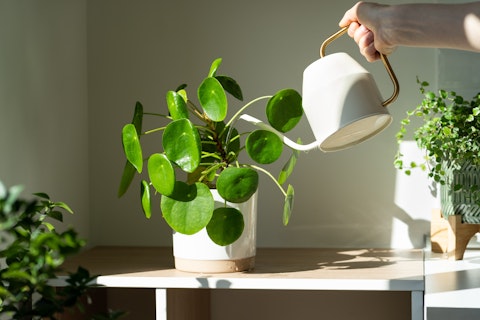
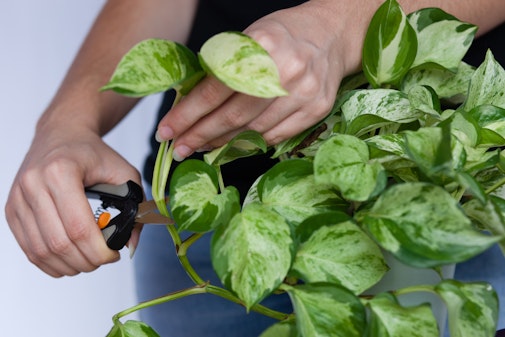
General Houseplant Care
Propagating Plants - Making new plants from the ones you have already
By Jonathan Davies
